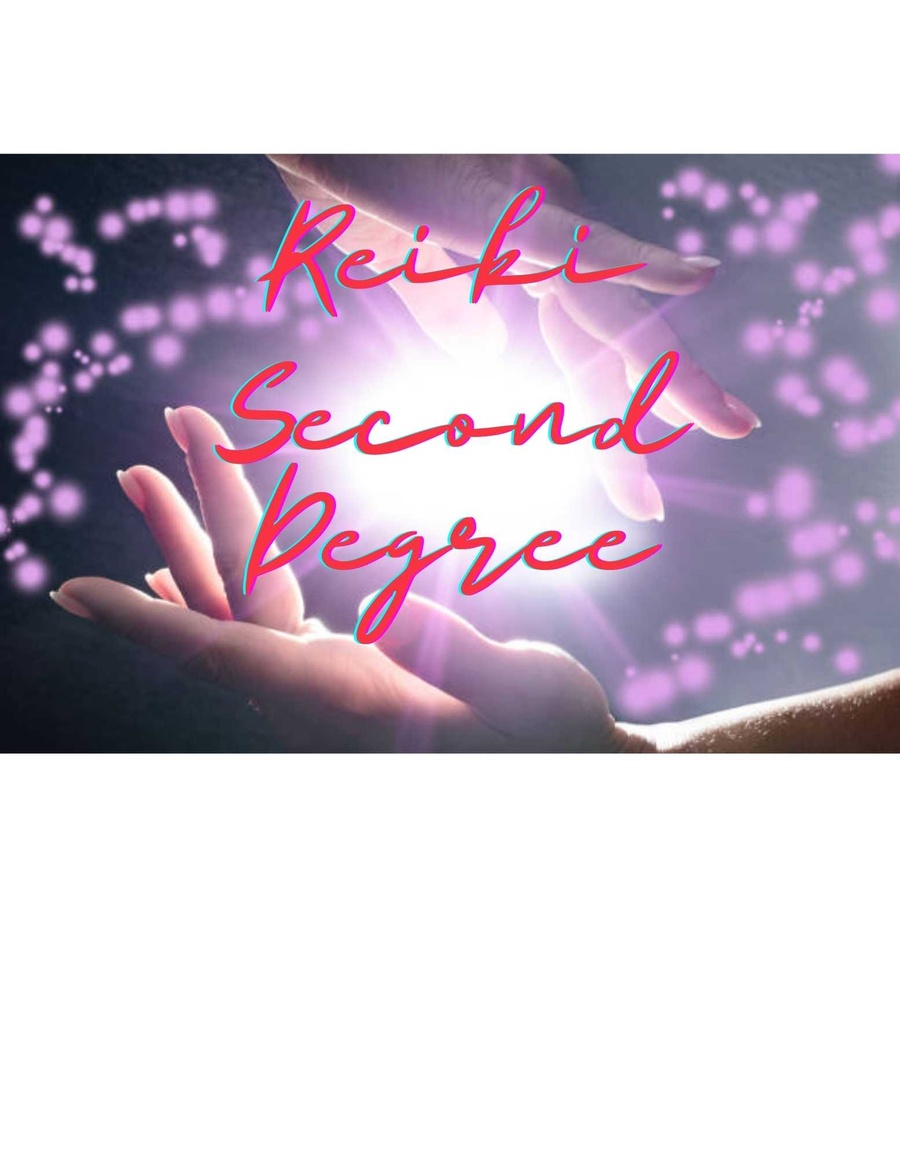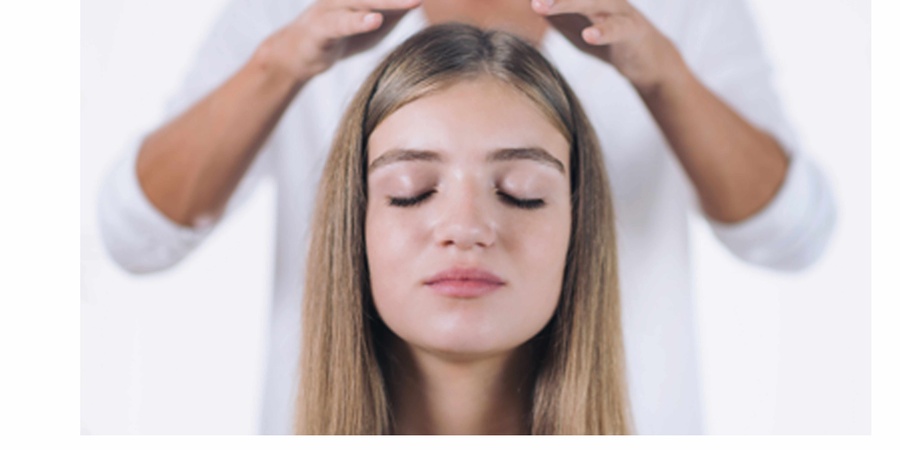Preparation To Second Degree Reiki Course

Second Degree Reiki is about self-healing and growth and helping others heal and flourish.
Reiki 2 is frequently referred to as the Practitioner Level, and I highly suggest it to anyone interested in practicing Reiki professionally.
So it's not only about obtaining another qualification and some additional skills in a healing practice. A critical step in your healing journey, bringing you closer to living Reiki—making Reiki an essential part of your daily life.
The course offers spiritual empowerment that strengthens your ability to channel healing energy. You learn three sacred symbols, their mantras (sacred names), and various special procedures that involve one or more of the symbols. Usually, you may "send" a full Reiki treatment to anyone, anywhere, with the same effect as if they were present.
Other treatments should involve profound emotional or mental healing, including personal or global crisis.
Before The Course
Choosing the correct Reiki Master for your Second Degree initiation is as important as choosing the right Master for your First Degree initiation. But it's not required, and you should always do what feels right to you, not what you're supposed to do. Ask questions about the Master's Reiki 2 course and their attitudes and ideas about Reiki—and other topics that may be significant to you—before picking who to train with.
Give yourself a full self-treatment every day for a week or two before the course, if it isn't already part of your daily practice. Also, allowing yourself a day or two before the course to truly calm down, perhaps meditate and spend time in nature, might be beneficial. Ideally, this continues after the course.
Different Approaches To Training
It is required to be attuned to Reiki 1 before taking a Second Degree course, and some Masters need a three-month interval between First and Second Degrees so your body can adjust to the higher vibrations initiated by your initial attunement(s).
Increasingly, Reiki Masters are waiving this prerequisite and allowing students to study Reiki 2 immediately following Reiki 1. However, some Masters now teach it in a single day, frequently following a one-day Reiki 1 course to complete both levels on the weekend. Each Master's method is unique, but some Masters who started their Reiki journey by taking both levels in two days mistakenly assume that Reiki cannot work without the Reiki symbols because they never had the chance to test it.
Thousands of Reiki First Degree students worldwide choose not to take a Second Degree course because their First Degree skills are sufficient. So I can emphasize—Reiki functions without the symbols, albeit they help. Also, learning the symbols at Second Degree doesn't mean you have to use them every time you practice Reiki.
Attunement At Second Degree

Ordinarily, a Second Degree Reiki course includes one attunement, while some Masters do two or three. According to recent Japanese sources, this level is sometimes broken into three halves, requiring an attunement each time. But I've always found that the single Second Degree attunement is much more profound and spiritual for many pupils than the First Degree. Many describe it as if a cloud has been lifted or reborn, with a new outlook on life. After the attunement, one of my Master's students, who was quite psychic, described a hazy veil being removed, leaving the students' auras lighter and clearer.
More energy is routed through your inner healing channel, allowing for more Reiki to be channeled—at least twice as much, and frequently up to four times more than with First Degree, yet the quality of the Reiki is identical. Only the quantity changes.
The Second Degree attunement method is quite similar to the First Degree attunement procedure, therefore anticipate to be requested to close your eyes and remain silent throughout. After the attunement, your Reiki Master will move in front of you and then back behind you. You will feel gentle caressing and blowing on your head and hands and may be invited to lift your hands briefly above your head before being gently lowered again.
After the process is over, you should spend some time meditating, connecting with nature, and understanding the Reiki symbols.

Related
Chanting And Toning With Karuna Reiki
The Karuna Reiki experience taught me that toning or chanting during a Karuna Reiki session causes profound shifts in the healing energy's vibrational frequency. The Mahayana Buddhist tradition of the bodhisattva Avalokitesvhara, who creates the Sound that Illuminates the World, validates this notion.
The Ethics Of Distant Reiki Healing
The Second Degree procedures teach you how to transmit powerful healing to anybody, anywhere, at any time, including the past and future. Using the Distant (Connection) Symbol helps you to construct a bridge between you and the person (or animal) you wish to heal.
Guided Meditation To Help Heal The Shadow Self Can Change Your Life
The shadow self refers to the aspects of ourselves that have been repressed into the unconscious — the aspects of ourselves that we are insecure about, ashamed of, or frustrated with. The shadow self-concept is based on the idea that we metaphorically bury those aspects of our personalities that we fear will not be accepted, accepted, or loved by others; thus, we keep them in the shadows.
How To Build A Successful Reiki Practice - FAQs
After you've mastered the techniques necessary to perform Reiki on others in-person and remotely, it is entirely up to you to decide whether Reiki is something you wish to pursue as a more formal public practice.
Integrative And Functional Medicine —Personalized Care For The 21st Century
The goal of integrative and functional medicine is to get to the root cause of health problems and treat the whole person with a combination of approaches—optimizing health for those who have it and restoring health for those who have lost it. Integrative medicine and functional medicine are often used interchangeably, but the terms are actually referring to two different approaches to patient care.
The Karuna Reiki Attunements
A common belief is that compassionate action is captured in this non-traditional form of Reiki. When used in conjunction with Usui Reiki, it has a powerful effect on its own, but even more so.
Karuna Master Symbols and Their Uses
Other healing systems incorporate the Karuna Reiki Master symbols. For instance, The International Center for Reiki Training incorporates the Usui Dai Ko Myo, Tibetan Dai Ko Mio, and Tibetan Fire Serpent into our Usui/Tibetan Reiki Master Training.
Kuan Yin - The Goddess Of Mercy
Kuan Yin is an example of an enlightened being. Bodhisattva, or enlightened being, guards the earth. The Chinese deity Kuan Yin is revered as a symbol of compassion and love.
Possible Side Effects Of A Karuna Reiki Attunement
Becoming a Reiki practitioner with the ability to heal oneself and others is a beautiful path that allows you to make a difference in the world. While it is exciting to receive an attunement in order to increase your frequency and connection to the universal life force energy, these attunements come at a cost.
The Traditional Karuna Reiki Attunements
Karuna is typically only taught to Usui Reiki Master practitioners. There are four levels of Karuna instruction. There are four levels of mastery in this system: two for practitioners and two for masters.
Original Karuna Attunements - The Sai Baba Reiki Attunements
For those wishing to view the original Sai Baba attunement process in order to compare it to later attunements, these are included for informational purposes only. You will notice a resemblance between these and the attunements developed later.
